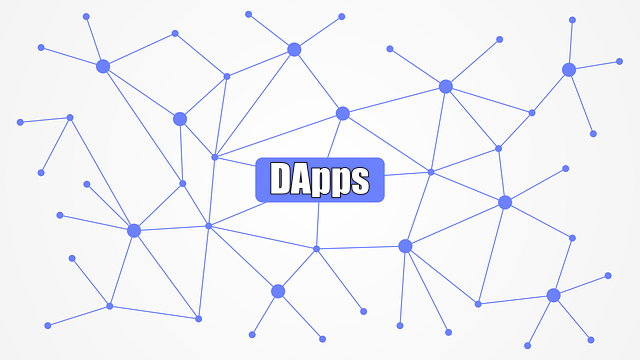What Exactly Are Dapps? Unraveling Their Types, Advantages, and Drawbacks
If you’ve spent some time within the crypto community, chances are you’ve come across the term “Dapp” more than once.
Curious about what Dapps truly? You’re in the right place.
In this post, I’ll dive into the essence of Dapps, exploring their definitions, various types, as well as their advantages and limitations. By the end, we’ll also delve into some popular platforms for creating your own.
So, What Exactly Is a Dapp?
“Dapp” stands for Decentralized Application.
Think of the apps you regularly use on your phone. Dapps are another version of these applications. However, what sets them apart is their operation on a peer-to-peer network.
While most conventional apps rely on centralized servers controlled by major organizations like Facebook or X (Twitter), Dapps operate independently of any single entity. They function within a peer-to-peer network, akin to Blockchain technology.
It’s worth noting that not all apps relying on peer-to-peer networks are considered crypto Dapps. Examples such as TOR or Torrent fall outside this category.
Within the cryptocurrency realm, for an application to qualify as a Dapp, it must meet certain criteria:
- It must be open-source and autonomous, devoid of centralized control.
- It utilizes cryptography for data storage, with the stored data accessible to the public.
- It employs a cryptographic token to ensure network security.
Applications meeting these criteria are recognized as Dapps, with variations existing within this category.
Now, Let’s Explore the Different Types of Dapps:
We can categorize Dapps into 3 types
Type 1.
These Dapps have their own Blockchain, cryptographic mechanisms, and incentive structures, akin to Bitcoin.
Type 2.
Dapps in this category leverage the Blockchain of Type 1 Dapps to operate.
The best example of a Type 2 Dapp is the IDEX decentralized exchange that runs on Ethereum and allows its users to connect their existing wallet.
Type 3.
Type 3 Dapps utilize the protocols of Type 2 applications.
For instance, the SAFE network employs the Omni Protocol from Type 2 to issue SafeCoins, which are then used for constructing distributed file storage.
Now that we’ve covered the different types of Dapps, let’s explore some of the benefits they offer.
Benefits of Dapps.
No Censorship.
In today’s world, privacy is paramount. However, traditional apps controlled by single entities leave users vulnerable to government or powerful individuals dictating activities and data usage.
Dapps offers a different paradigm. With no single governing body in control and cryptographic safeguards ensuring user privacy, it becomes challenging for any individual or government to exert control over Dapps.
Open-Source.
The open-source nature of Dapps fosters a vibrant ecosystem where developers can continuously enhance functionality, resulting in more useful and engaging experiences for users.
No downtime.
Even tech giants like Google and Amazon experience downtime issues annually.
However, Dapps, relying on peer-to-peer networks, maintain functionality even if individual nodes or segments of the network encounter disruptions.
While these advantages of Dapps are compelling, it’s essential to acknowledge their weaknesses as well:
Weakness of Dapps.
Hacks.
Many Dapps, particularly type 2 applications reliant on type 1 Dapps and smart contracts, face challenges with updates and bug fixes.
These complexities can create vulnerabilities that hackers exploit, posing security risks to the network.
KYC Is Not Easy.
Unlike centralized apps that implement Know Your Customer (KYC) procedures.
Dapps lack a centralized entity responsible for user verification. This absence complicates the process of building Dapps and verifying user identities.
Usability.
The nascent stage of Dapps often translates into poor user interfaces, deterring potential users.
However, as Dapps evolve, improvements in performance and usability are expected.
Low User Base.
Due to usability issues and a lack of widespread adoption, Dapps typically have smaller user bases compared to centralized apps.
This phenomenon, known as the Network Effect, can hamper interactivity and compromise security, as a Dapp’s resilience often depends on its user community.
While Dapps present challenges, their potential is significant. Below are some notable Type 1 Dapps platforms:
Popular Dapp Platforms.
Ethereum.

When Bitcoin pioneered decentralized applications (Dapps) on the Blockchain, it showcased the vast potential of Blockchain technology.
However, Bitcoin’s network limitations restricted developers from fully harnessing its protocols for Dapp development.
In 2015, Ethereum emerged with the mission of empowering developers to create and launch Dapps on its dedicated Blockchain network.
Ethereum offers developers the simplicity of creating smart contracts using its proprietary programming language, Solidity.
Today, more than half of the Dapps are built on the Ethereum platform.
EOS.

Initially developed as a Dapp on the Ethereum network, EOS transitioned to its own Blockchain after a successful ICO that raised $4 billion.
The EOS platform is designed to facilitate the creation of Dapps resembling traditional web-based applications.
Unlike Ethereum, EOS operates on a centralized model controlled by the company block.one. It employs the proof-of-stake method, where only 21 block producers are responsible for validating transactions on the network.
TRON.

Founded by Chinese entrepreneur Justin Sun in 2017, TRON initially started as an Ethereum-based Dapp.
In 2018, TRON migrated to its own Blockchain structure, enabling developers to build Dapps independently.
Despite the transition, TRON continues to utilize Solidity for Dapp development. However, unlike Ethereum, TRON operates on a centralized model using the Delegated Proof of Stake (DPoS) consensus algorithm, governed by 27 Super Representatives elected by TRX token holders.
Steller.

Established in 2014 by Jeb McCaleb, co-founder of Mt. Gox and Ripple, along with Joyce Kim, Stellar offers a unique approach to Dapp development.
Unlike other platforms, Stellar does not allow developers to directly build Dapps on its network.
Instead, it provides its own API server called Stellar Horizon, supporting development in various programming languages such as Java, C++, Javascript, Python, and Ruby. Stellar utilizes its consensus mechanism, the “federated Byzantine agreement system,” to facilitate decentralized decision-making efficiently.
Conclusion.
Dapps hold immense potential to revolutionize industries in the coming years. Some experts even predict that Dapps will surpass the world’s largest software corporations in terms of utility, user base, and network valuation.
Their superior incentivization structure, flexibility, transparency, resilience, and decentralized nature make them a compelling force in the technological landscape.
What are your thoughts on Dapps? Share your insights in the comments below.
If you found this post insightful, don’t hesitate to share it with your family and friends. Together, let’s explore the transformative potential of decentralized applications.
